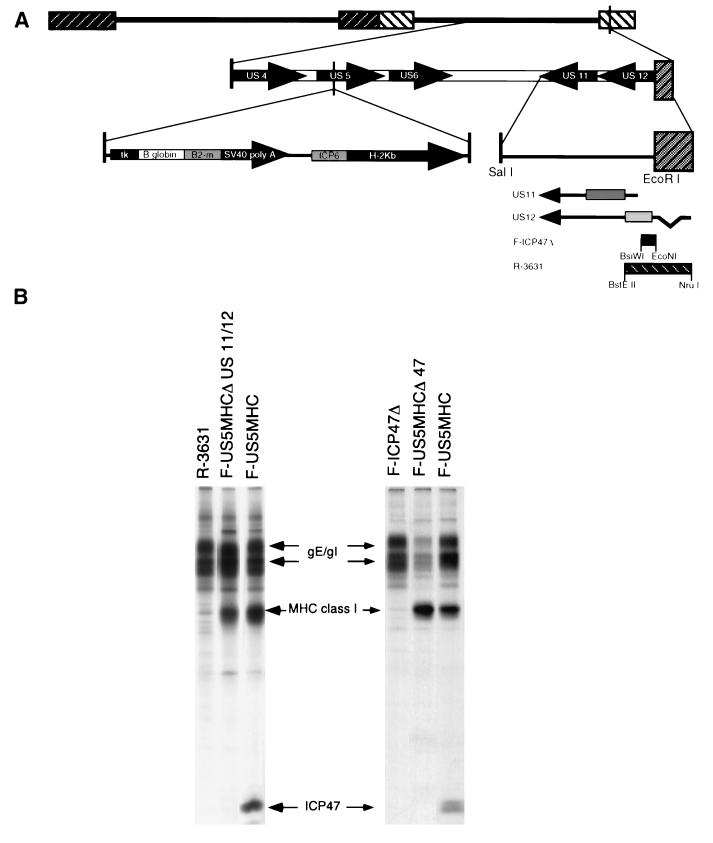FIG. 4.
Construction of recombinant HSV-1 able to express murine MHC class I proteins and not ICP47. (A) Diagram depicting the genome of HSV-1. An HSV-1 recombinant, F-US5MHC, able to express the murine MHC class I heavy-chain and β2-microglobulin (β2-m) proteins, was previously described (18). In the US5 gene in F-US5MHC, the murine β2-microglobulin gene is coupled to the HSV-1 thymidine kinase (tk) promoter and the simian virus 40 (SV40) polyadenylation site, and the class I (H-2Kb) heavy-chain gene is coupled to the HSV-1 ICP6 promoter. HSV-1 mutants unable to express ICP47, F-ICP47Δ (5), or ICP47 and the neighboring US11 gene, R3631 (11), have also been described. F-ICP47Δ has a deletion of the N-terminal region of the ICP47 protein, while R3631 has a larger deletion that abolishes expression of ICP47 and US11. Vero cells were coinfected with F-US5MHC and either F-ICP47Δ or R-3631, so that recombination occurred in the infected cells. Viruses able to express murine class I proteins but unable to express ICP47, F-US5MHCΔ47 (derived from F-ICP47Δ), and F-US5MHCΔUS11/12 (derived from R3631) were isolated from these coinfections. (B) Expression of ICP47 and MHC class I proteins was assessed in cells infected with the recombinant viruses by infecting R970 cells, labelling the cells with [35S]methionine, and then simultaneously immunoprecipitating ICP47 and MHC class I proteins from cell extracts. The HSV immunoglobulin G Fc receptor composed of gE and gI was precipitated by the rabbit immunoglobulin G present in the anti-ICP47 and anti-MHC class I serum.

